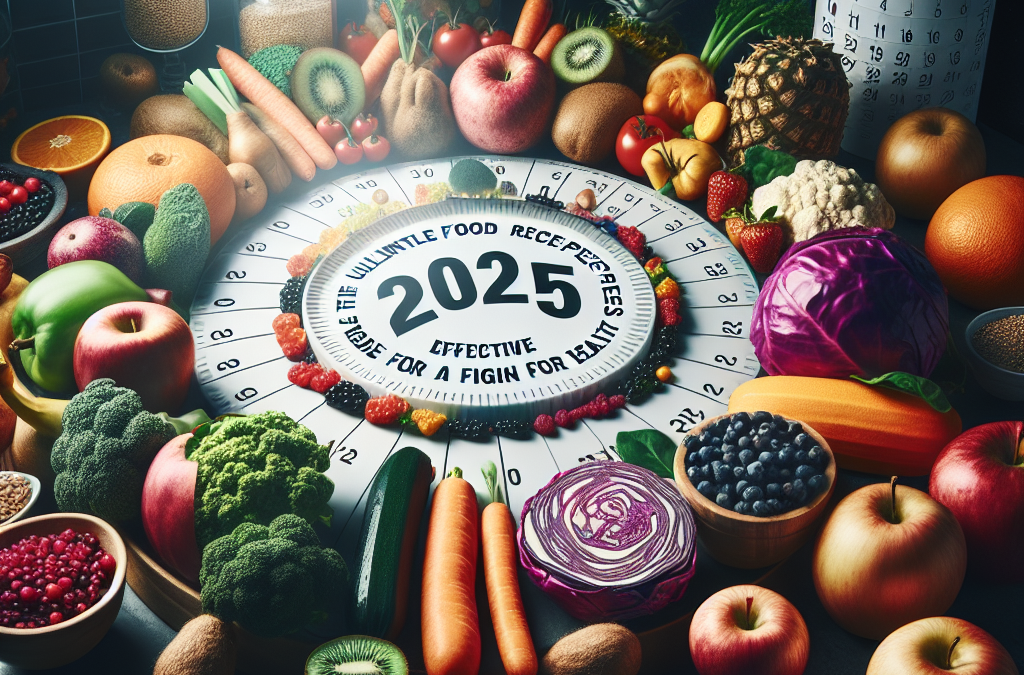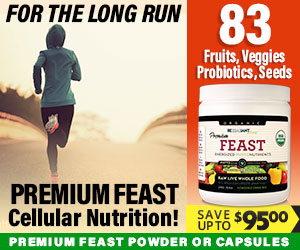- 1. Quinoa & Kale Power Salad
- 2. Spiced Lentil & Vegetable Soup
- 3. Baked Sweet Potato & Chickpea Bowl
- 4. Avocado & Tomato Whole Grain Toast
- 5. Overnight Oats with Nut & Berry Topping
- 6. Grilled Salmon with Roasted Vegetables
- 7. Collard Wraps with Hummus & Veggies
- 8. Green Smoothie with Spinach & Chia Seeds
- 9. Quinoa Stuffed Bell Peppers
- 10. Fresh Fruit & Nut Yogurt Parfait
1. Quinoa & Kale Power Salad
Nutrition Benefits of Quinoa and Kale
Starting off with a staple of whole food recipes for health in 2025, the quinoa and kale power salad offers a nutrient-dense meal packed with vitamins, minerals, and fiber. Quinoa is a complete plant-based protein containing all nine essential amino acids, making it ideal for vegetarians and meat-eaters alike.
Kale, often called a superfood, is rich in antioxidants, vitamin C, vitamin K, and calcium. Combining these two ingredients creates a harmonious balance of macronutrients and micronutrients that support immune health, digestion, and energy levels. Recent studies show that consuming such nutrient-dense salads regularly can reduce inflammation and promote overall well-being.
To enhance this recipe, consider adding a variety of colorful vegetables like bell peppers or cherry tomatoes, and topping it with a lemon-tahini dressing. This will not only improve flavor but also boost the health benefits of your whole food recipes for health.
Practical Tips for Preparation
Preparing the quinoa in advance and storing it in the fridge simplifies making this salad on busy days. Rinse quinoa thoroughly before cooking to remove any bitterness, and cook it with a 2:1 water ratio for fluffy grains. Massage kale with a little olive oil and lemon juice to make it tender and easier to digest.
Adding some roasted seeds or nuts, like sunflower or pumpkin seeds, gives a satisfying crunch and adds healthy fats. For flavor, incorporate fresh herbs such as parsley or cilantro. This customizable salad is perfect for weekday lunches and can be made in large batches, fitting into any whole food recipes for health plan.
2. Spiced Lentil & Vegetable Soup
Health Benefits of Lentils and Vegetables
This hearty soup exemplifies the essence of whole food recipes for health by combining fiber-rich lentils with seasonal vegetables. Lentils are a powerhouse of plant-based protein, iron, and folate, essential for energy production and blood health. When paired with nutrient-dense vegetables like carrots, spinach, and tomatoes, the soup becomes a complete, warming meal.
Research indicates that regular consumption of legumes like lentils can help regulate blood sugar levels and support heart health. The inclusion of warm spices such as turmeric, cumin, and cinnamon adds anti-inflammatory properties, making this soup a top choice for 2025’s health-conscious consumers.
Make this soup ahead and store it in airtight containersâit’s perfect for batch cooking. Use organic, seasonal vegetables to maximize flavor and nutrient retention, aligning with current trends in whole food recipes for health.
Cooking Tips
To ensure the lentils cook evenly and absorb flavors, rinse them thoroughly before cooking. Simmer the soup until lentils are tender, about 25-30 minutes. Consider adding a splash of apple cider vinegar at the end for a flavor boost and digestion aid.
This soup can be easily customizedâadd kale, spinach, or other greens near the end of cooking for extra nutrients. Serve with a slice of whole grain bread or a side salad for a complete, wholesome meal that fits perfectly into your health-focused meal plan.
3. Baked Sweet Potato & Chickpea Bowl
Nutritious Power of Sweet Potatoes and Chickpeas
Next on our list of whole food recipes for health is the baked sweet potato and chickpea bowlâa vibrant dish that combines complex carbs with plant-based protein. Sweet potatoes are high in beta-carotene, vitamin C, and fiber, which help sustain energy and improve digestive health in 2025.
Chickpeas supply protein and fiber, supporting blood sugar control and satiety. This bowl is excellent for those seeking satisfying, nutrient-rich meals that are easy to prepare. When baked with olive oil and spices like paprika and cumin, sweet potatoes develop a rich, caramelized flavor, elevating your healthful eating experience.
This recipe is versatile; include fresh greens, tahini drizzle, or pickled vegetables to diversify flavors. Incorporate seasonal produce to keep your whole food recipes for health inventive and exciting throughout the year.
Preparation Tips
To prepare, poke holes in sweet potatoes and bake at 400°F (200°C) for 45-60 minutes until soft. Roast chickpeas separately with your favorite spices to add crunch. Layer these ingredients over a bowl of cooked grains or greens for a balanced meal.
Adding a side of fermented foods, like sauerkraut or kimchi, can further boost gut health, aligning with the focus on wholesome, health-boosting ingredients in 2025’s dietary trends. This dish is excellent for meal prep and fits seamlessly into whole food recipes for health plans.
4. Avocado & Tomato Whole Grain Toast
Benefits of Whole Grains and Healthy Fats
Simple yet incredibly nutritious, avocado and tomato on whole grain toast remains a favorite in whole food recipes for health. Whole grains provide fiber and essential nutrients, supporting heart health and digestive regularity, especially important in 2025 when dietary fiber intake remains a priority.
Avocado supplies healthy monounsaturated fats that promote better cholesterol levels and overall cardiovascular health. The combination of creamy avocado with ripe tomatoes offers antioxidants like lycopene, which research links to improved skin and immune function.
Adding toppings such as microgreens, seeds, or a boiled egg can make this snack or meal more filling and nutrient-dense, fitting into balanced whole food recipes for health for any time of day.
Preparation Tips
Lightly toast whole grain bread and spread with ripe avocado, seasoned with lemon, salt, and pepper. Top with sliced tomatoes and optional extras for added flavor and nutrition. Running this quick recipe regularly can help maintain a sustainable, health-focused diet in 2025.
Use organic, locally sourced ingredients whenever possible to maximize nutrient intake. Incorporating this meal into your weekly routine aligns with current trends in clean eating and whole food recipes for health.
5. Overnight Oats with Nut & Berry Topping
Why Overnight Oats Are Great for Health
Another excellent example of whole food recipes for health, overnight oats are convenient, customizable, and packed with fiber and antioxidants. Made by soaking rolled oats in milk or yogurt overnight, this dish preserves nutrients and makes mornings easier.
Adding a variety of nuts and berries enhances the antioxidant profile while providing healthy fats and extra fiber. Research shows that consuming berries regularly can improve cognitive function and reduce inflammation, vital for aging well in 2025.
This breakfast is perfect for busy mornings and supports weight management and gut healthâboth crucial goals in today’s health-conscious society. It also encourages mindful eating, a trend gaining popularity in 2025.
Tips for Making Perfect Overnight Oats
Choose rolled oats or steel-cut oats for a creamier consistency. Mix with your choice of milkâdairy or plant-basedâand refrigerate for at least 4 hours. Top with fresh berries, chopped nuts, and a drizzle of honey or maple syrup.
Experiment with flavorings like cinnamon, vanilla, or cocoa powder to keep your whole food recipes for health diverse and appealing. Incorporate this breakfast into your routine to support sustained energy and nutritional balance throughout the year.
6. Grilled Salmon with Roasted Vegetables
Omega-3 Fatty Acids and Vegetable Power
For a nutrient-packed main course aligning with whole food recipes for health, grilled salmon paired with roasted vegetables offers healthy omega-3s and a spectrum of vitamins. Salmon is a superfood, rich in EPA and DHA, essential for brain health and inflammation reduction in 2025.
Roasted seasonal vegetables like Brussels sprouts, carrots, and zucchini add fiber, antioxidants, and flavor. Combining these foods creates a wholesome, balanced meal perfect for supporting heart and cognitive healthâa top priority in 2025’s health guidelines.
Investing in sustainable, wild-caught salmon supports environmental health and aligns with ethical eating trends, which are increasingly integrated into health-conscious recipes for 2025. This dish is scalable for family dinners or meal prepping.
Get an Amazing Discount on the Best Certified Organic Whole Food Supplement!
Cooking and Serving Tips
Marinate salmon briefly with lemon juice, herbs, and a touch of olive oil before grilling for extra flavor. Roast vegetables in the oven with olive oil and spices for caramelization. Serve everything with your favorite whole grain or leafy greens.
Adding lemon wedges or a yogurt-based sauce can elevate flavors while boosting probiotic intake. This wholesome meal exemplifies how whole food recipes for health can be both delicious and nourishing.
7. Collard Wraps with Hummus & Veggies
Fiber and Plant-Based Protein in Wraps
These collard wraps are a fantastic example of whole food recipes for health that emphasize raw, unprocessed ingredients. Collard greens are nutrient-dense and fiber-rich, making them an excellent alternative to traditional bread or tortillas.
Filling these wraps with hummus, sliced veggies, and sprouts creates a portable meal rich in plant-based protein, fiber, and healthy fats. Such recipes support digestive health and sustained energy, vital in managing a busy lifestyle in 2025.
Experiment with different fillings like roasted sweet potatoes, falafel, or grilled chicken to diversify your meals while staying within the framework of wholesome ingredients.
Preparation Advice
To prepare, blanch collard greens briefly to soften and make wrapping easier. Spread a layer of hummus, add your choice of fillings, then roll tightly. Secure with a toothpick if needed.
Using organic ingredients and adding seeds or sprouts boosts nutrient density, aligning with current health trends. Incorporate these wraps into your regular diet for a convenient, nourishing, whole food meals for health container.
8. Green Smoothie with Spinach & Chia Seeds
Superfoods for Gut and Brain Health
This quick and nutritious green smoothie is a favorite among health enthusiasts for whole food recipes for health. Spinach provides iron, magnesium, and antioxidants, supporting energy and immune function in 2025.
Chia seeds are packed with omega-3s, fiber, and protein, aiding digestion and cardiovascular health. Combining these with bananas, avocado, or berries creates a creamy, nutrient-rich drink that boosts overall wellness.
Making smoothies a regular habit helps incorporate greens and healthy fats easily into your diet, especially beneficial for busy individuals aiming for optimal health in 2025.
Preparation Tips
Blend spinach, a ripe banana or avocado, and your choice of milk or water until smooth. Add chia seeds and let sit for 5 minutes to allow thickening. Customize with other superfoods like maca powder or spirulina.
This simple recipe supports hydration, gut health, and brain function, reinforcing its role in effective whole food recipes for health. Keep ingredients organic and seasonal for the best results.
9. Quinoa Stuffed Bell Peppers
Balanced, Colorful Nutrition
Quinoa stuffed bell peppers highlight the versatility of whole food recipes for health by combining complete plant proteins with colorful, nutrient-dense vegetables. Bell peppers are rich in vitamin C and antioxidants, helping support immune health in 2025.
Stuffed with a mixture of quinoa, beans, vegetables, and herbs, these peppers act as a satisfying main dish or side that delivers fiber and essential nutrients. They are visually appealing and customizableâperfect for meal prep and health-conscious eating.
This recipe aligns with the trend of plant-based meals that are both delicious and nutrient-rich, emphasizing whole and minimally processed ingredients.
Cooking Suggestions
Pre-cook quinoa and mix with sautéed vegetables, beans, and spices. Stuff into halved bell peppers, then bake at 375°F (190°C) for about 20-25 minutes. Garnish with fresh herbs for added flavor and nutrients.
Opt for organic and local ingredients whenever possible, reinforcing the principles of clean, sustainable eating in 2025.
10. Fresh Fruit & Nut Yogurt Parfait
Perfect Snack or Light Meal
Rounding off our list of whole food recipes for health is the classic fruit and nut yogurt parfait. Using plain Greek yogurt, layered with fresh fruits and crunchy nuts, creates a balanced mix of protein, fiber, and antioxidants.
This parfait supports digestive health, muscle repair, and immune functionâkey aspects of a healthy diet in 2025. Itâs quick to prepare, portable, and adaptable with seasonal fruits and nuts, aligning perfectly with ongoing consumer trends toward simple, wholesome eating.
Adding a drizzle of honey or natural sweetener can enhance flavor without compromising health benefits. Incorporate this snack into your daily routine to maintain a nutrient-dense, satisfying diet.
Serving Tips
Layer ingredients in a glass or jar for visual appeal. Use organic, local fruits to maximize nutrient density. This simple yet effective meal/snack fits seamlessly into various whole food recipes for health plans.
Also, consider using plant-based yogurts like coconut or almond yogurt for different dietary preferences and to diversify your nutrition intake.
Frequently Asked Questions about Whole Food Recipes for Health
1. What are some easy whole food recipes for beginners?
Starting with simple dishes like overnight oats, smoothies, and salads is a great way to incorporate whole food recipes for health into your routine. These recipes require minimal cooking and can be easily customized.
2. How can I make my meals more nutrient-dense using whole foods?
Focus on incorporating a variety of colorful vegetables, nuts, seeds, and whole grains. Using minimally processed ingredients and incorporating superfoods like berries, leafy greens, and omega-3 rich fish will boost nutrient density.
3. Why are whole food recipes for health important in 2025?
As research continues to link processed foods with chronic health issues, whole food recipes for health are increasingly recognized for their role in preventing disease, supporting longevity, and improving overall well-being in 2025.
4. Can I meal prep with whole food recipes?
Absolutely! Many of the recipes listed, such as soups, salads, and baked dishes, can be prepared in advance. Meal prepping with wholesome ingredients saves time and encourages healthier eating habits.
5. Where can I find more whole food recipes for health in 2025?
Look for reputable health blogs, cookbooks focused on plant-based eating, and dietitian resources that emphasize the latest trends in wholesome, minimally processed ingredients.
Conclusion
In 2025, embracing whole food recipes for health remains an essential strategy for fostering lasting wellness and vitality. The 10 recipes outlined above demonstrate how simple, tasty, and nourishing whole food meals can fit seamlessly into modern lifestyles. Prioritizing fresh, minimally processed ingredients not only supports individual health but also contributes to a more sustainable and mindful approach to eating. Whether youâre a seasoned foodie or just starting your health journey, these recipes will help you make smarter choices that benefit your body, mind, and planetâmaking 2025 your healthiest year yet.




